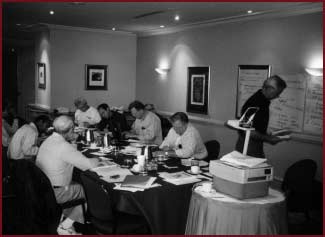U.S. Department of Transportation
Federal Highway Administration
1200 New Jersey Avenue, SE
Washington, DC 20590
202-366-4000
Traditionally, highway agencies have allowed the ride quality and structural condition of their pavements to deteriorate to fair or poor condition before taking steps to rehabilitate them. The aim of rehabilitation is to repair structural damage and restore measurable pavement conditions, such as ride, rutting, and cracking. This is a costly and time-consuming activity with associated traffic disruptions and inconvenience to adjacent businesses and residences. In recent years, an increasing number of highway agencies have found that applying a series of low-cost pavement preservation treatments can extend the service lives of their pavements. This translates into a better investment and increased customer satisfaction and support.
The concept of highway system preservation using a variety of pavement preservation techniques and strategies is gaining interest in the United States. Scanning studies provide an invaluable opportunity to benchmark foreign technical and managerial practices for the benefit of public- and private-sector partners in the U.S. transportation community. In light of this, France, South Africa, and Australia were selected as

Figure 1. The scanning team visited France, South Africa, and Australia to observe
pavement preservation innovations.
destinations for a scanning study team, having been identified as nations with innovative programs and state-of-the-art treatments for pavement preservation. The scanning team started in Paris and Nantes, France; continued to Pretoria and Johannesburg, South Africa; and completed the study in Australia with visits to Perth in Western Australia, Melbourne in Victoria, Brisbane in Queensland, and Sydney in New South Wales.
The scanning study's objective was to review and document innovative techniques, materials, procedures, and equipment used in the host countries for pavement preservation and to evaluate these elements for potential application in the United States. To this end, the panel met with government agencies and private-sector organizations involved with pavement preservation, as well as visited sites to observe firsthand the results of pavement preservation techniques and strategies.
The Federal Highway Administration (FHWA), an agency of the U.S. Department of Transportation, the American Association of State Highway and Transportation Officials (AASHTO), and the National Cooperative Highway Research Program (NCHRP) jointly sponsored the Pavement Preservation International Scanning Study. The delegation included members representing State departments of transportation (DOT) in Georgia, Michigan, Pennsylvania, and Texas; National Association of County Engineers; FHWA; National Park Service; American Public Works Association; and from the private sector, Koch Materials Company and Kristen Betty and Associates (Appendix B). Team members have expertise in program development andadministration, pavement design and management, construction, materials, and maintenance.
Team members developed a list of amplifying questions (Appendix C), which was sent to each country before the study. These questions provided the host countries with an understanding of the topics of interest to the U.S. team and enabled the hosts to plan their presentations and site visits accordingly. The amplifying questions focused on four major topics:

Figure 2. Team members met frequently during the tour to share observations.
Team members shared their experience, expertise, and opinions among themselves and with the hosts. As a result of these exchanges, excellent formal presentations, and informative site visits, the team developed general observations and key findings relating to the practice of pavement preservation in the three countries. The team also developed recommendations for potential implementation in the United States.
The technical information gathered during the study is included in this report. Chapter Two, General Observations, covers information about pavement preservation that team members believe is of general interest to the highway community. Chapter Three, Key Findings, outlines actions the host nations have taken that have had a marked impact on pavement preservation activities and program success.
Team members met both before the trip and during the course of their travels. In addition, a formal meeting at the end of the trip and correspondence added further refinements to this report. The report is not intended to be a synthesis of international practice, but a compilation of the team's thoughts, observations, key findings, and recommendations.
| << Previous | Contents | Next >> |